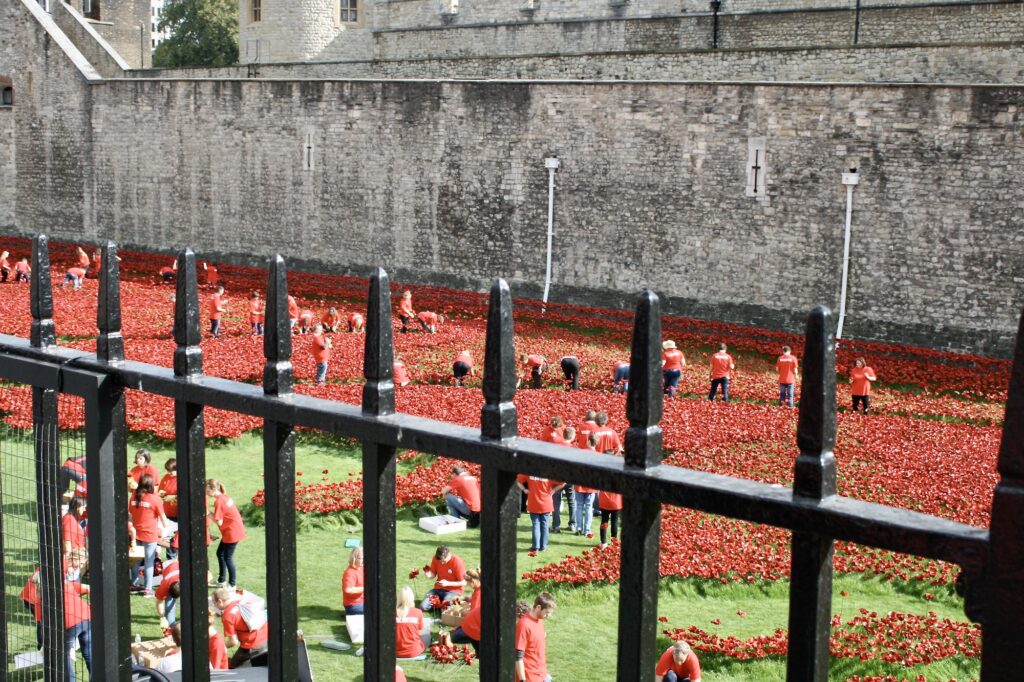
It is now nine years since the Tower of London moat was filled with a mass of red: 888,246 ceramic poppies, each flower representing a British, or British Commonwealth soldier killed during the First World War. And so, on Remembrance Sunday, here is a reminder of Blood swept lands and seas of red, a tribute to all those who “did not grow old, as we who were left grow old”.

Conceived and designed by Paul Cummins and Tom Piper, the installation caught the imagination of the public, attracting over five million visitors during the period of its assembly, which began in July 2014 and ended the day after Armistice Day that year. Of all the images commemorating the start of the First World War during 2014, this resonated the most, reaching nearly everyone in the country through the media, and of course, it had a huge impact on those who came to see the installation for themselves. From aerial photographs of the Tower’s blood-red moat to close-ups of one or more poppies, the images of Blood Swept Lands and Seas of Red expressed the incomprehensible number of soldiers killed.


Every poppy was slightly different. Unique. Like every life lost. And this was because they were hand-made by different ceramic artists and nothing in their manufacture was automated. Any machinery used was hand-powered.
All those involved, from the original idea to the volunteers who helped with the installation and the dismantling of Blood Swept Lands and Seas of Red, were moved by their connection with this extraordinary commemoration. Many had had family members killed in the First World War, and the loss of life really hit home when they saw how many poppies there were.

There were some dissenting voices suggesting that it would have been better to include more obvious symbols of war and its horrors but designer Tom Piper pointed out that it worked at a more subtle level, adding that he had learnt from his years of set designing “not to illustrate a play with the obvious”.


Poppies are an instantly recognisable symbol of Remembrance that almost everyone in the country can relate to, and knowing that every poppy in the “sea of red”, represented an individual soldier, lost to their family, made a lasting impression on all those who came to see them, including HM Queen Elizabeth II, and the Duke of Edinburgh. The final poppy was planted by Cadet Harry Alexander Hayes on Remembrance Day, 2014.


“At the going down of the sun and in the morning
We will remember them.”
****************************
The poppies went on sale to the public for £25 each, the profits being shared between six service charities. As they were removed from the moat they were taken away to be cleaned, packed in special commemorative boxes and sent out to those who had bought them. The last poppy was removed on November 28, 2014.
***************************
To mark the centenary of the end of the Great War, Beyond the Deepening Shadow, saw 10,00 candles lit nightly in a ceremony of Remembrance, which took place during November 2018.
Further Information
A short history of the Tower of London moat can be found here at Historic Royal Palaces.